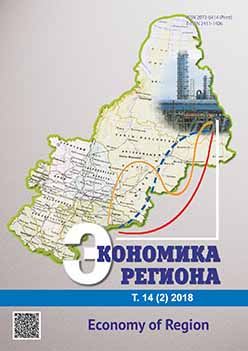Неустойчивая занятость в регионах Российской Федерации: результаты социологического исследования
Precarious Employment in the Regions of Russian Federation: Sociological Survey Results
Author(s): Vyacheslav Nikolaevich Bobkov, Vadim Grigoryevich Kvachev, Irina Viktorovna NovikovaSubject(s): Economy, Geography, Regional studies
Published by: Институт экономики Уральского отделения Российской академии наук
Keywords: precarious employment; labour market; standard of living; sociological survey of employees; contractual relationship; workers’ profile; gender inequality; age inequality; educational inequality; self-
Summary/Abstract: This article presents the results of the study on precarious employment, which represents a multilevel phenomenon of the instability in the socio-economic positions of workers. This phenomenon has various forms. Precarious employment can be identified both in terms of the quality and nature of employment contract, working conditions, and in terms of the standard of living of households of precarious workers, their self-perception and behaviour models in labour market and other spheres of life. The purpose of the research is to study precarious employment using sociological indicators. We characterize precarious employment of workers, in general, and also define their profiles. Depending on the type of contractual relations and the implementation of their requirements, the profiles of employees differ in the socio-demographic, age, educational and economic characteristics. As a research method, we chose a mass survey. The sampling frame is the Russian population aged from 15 to 72 years. The selection included 1002 respondents, which were quoted by sex, age, region and socio-demographic status on the labour market. During the survey, we investigated the various aspects of precarious employment including respect for the rights of employees, level of their income, prevalence of various forms of precarious employment by profession, sex-age structure. The results of the study are the demographic, socio-labour and economic characteristics of the surveyed population as well as the description of five profiles identifying the different groups of precarious workers. The results may be applied in social-labour relations regulated by contractual agreements and working conditions of employees. Restrictions are connected with the need to change the legislation and the enforcement of the current labour and civil legislation. Future research should be focused on the ьreasons of the differentiation in precarious employment.
Journal: Экономика региона
- Issue Year: 14/2018
- Issue No: 2
- Page Range: 366-379
- Page Count: 14
- Language: Russian

